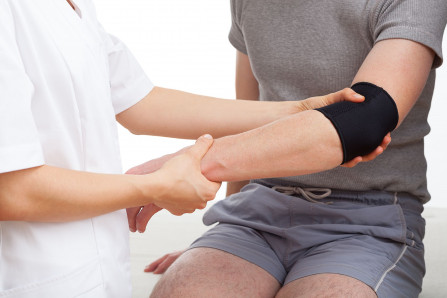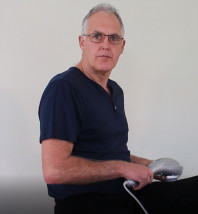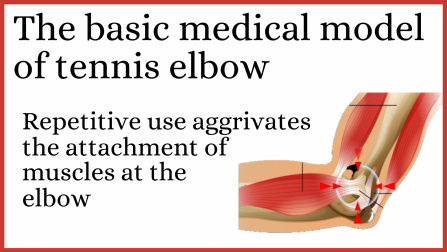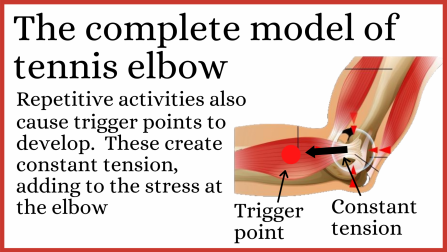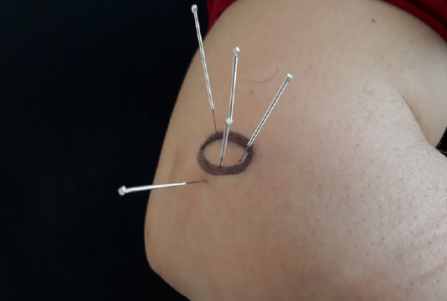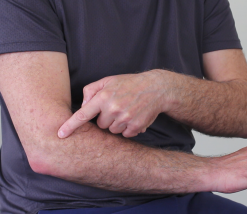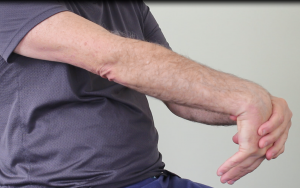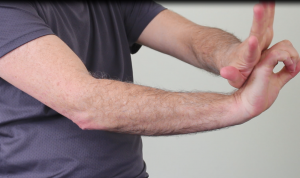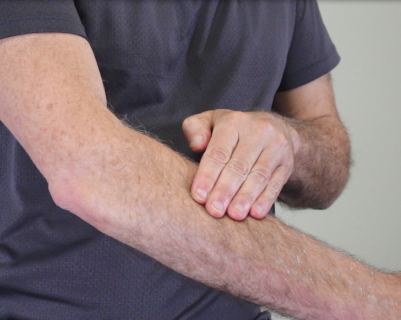What you can do about it
What we will do here is show you a couple of simple tests to show if you have trigger points causing abnormal tension in your elbow. If you do we have an excellent step by step guide using mainly home care to properly get rid of your tennis elbow.
The simple step by step self test for tennis elbow
Although these tests are simple enough to easily do yourself please consider them as general information only, to be discussed with a health care professional familiar with your needs.
Step one: is it tennis elbow
Tennis elbow is fairly simple to identify. You first feel the outside of your elbow. You will find a bony bump where the muscles attached. If you have tennis elbow this bony bump and for about 1cm towards your wrist will be tender. There are two very simple medical tests with the impressive names Cozens Test and Mills Maneuver. They are both simply designed to stress the elbow. If they cause elbow pain that is positive. The examination and these tests are pictured below.
